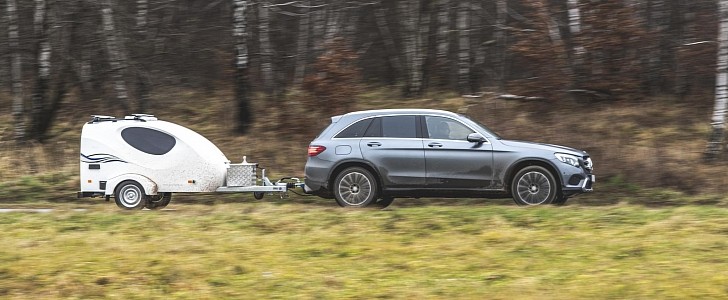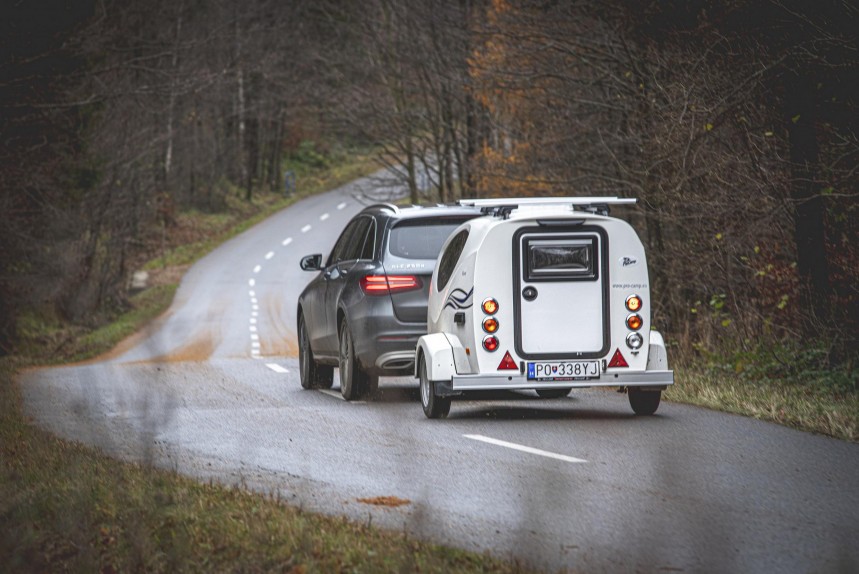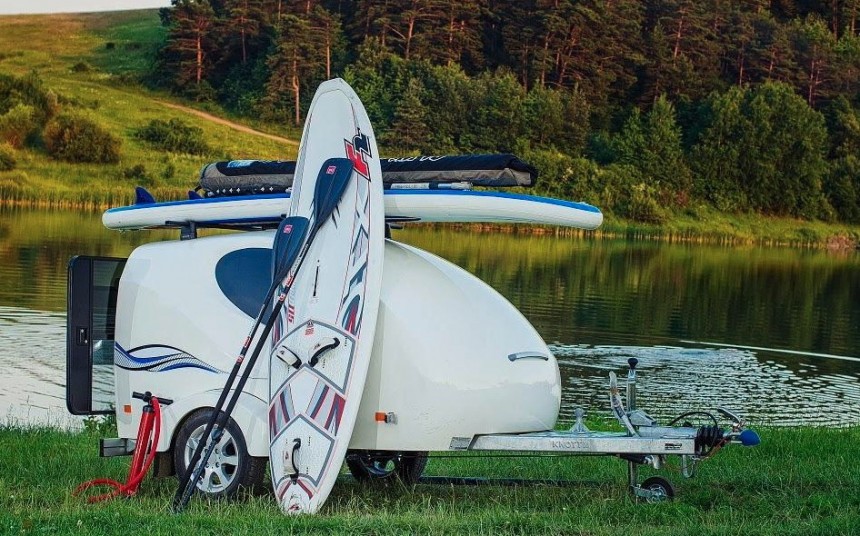Let's face it, not everyone has the sort of vehicle needed to tow some massive RV capable of keeping an entire family alive and comfortable. Some folks just need a small towable that can offer the bare necessities of off-grid living. For those kinds of people, the Wave camper from Procamp might just be of interest.
Folks, imagine a travel trailer that you don't need to back your vehicle up to in order to connect; you can literally pull the Wave around your yard to wherever you need it to be. That's the sort of camper we'll be looking at today; a lightweight mobile bedroom suitable for two people and can be towed behind just about anything with a motor and enough torque to handle 20 kg (44 lbs) of drawbar load. Now, before you start picking up the phone and whipping out your credit cards, there are a few things you need to know about the Wave. And that's what we'll be exploring today.
You've noticed that this sucker is relatively light, but how light? Well, it comes in with a dry weight of 190 kg (419 lbs), and in running order, just 290 kg (639 lbs). How is this possible? Aside from the fact that the camper is built using a sandwich panel construction, the exterior and interior are built using polyurethane and finally laminated to ward off the elements, with the insulation sandwiched in between, 28 mm (1.1 in) of shell stands between you and the exterior world. Another reason for the lightweight construction is that the body is molded as a single piece, eliminating the need for bolts, screws, and weatherproofing; there's nowhere for the elements to seep in.
Ok, so this sucker is light and weatherproof, but what else? The best way to describe what you can do with a Wave camper, let's take a short trip through a hypothetical off-grid setting. You've made it across hundreds and hundreds of miles and finally arrived at the camping grounds you've planned for this winter. Once there, you'll release the rear support legs, unhitch your camper and enjoy your stay. That's absolutely it.
Come nighttime, you'll want to get some shuteye, and that's mostly what this camper is good for. You'll be able to climb inside and access the hatch found at the rear and access a space that's 142 cm (56 in) wide, 215 cm (84.6 in) long, and only 95 cm (37.4 in) tall. No, you won't be able to stand up, but it should do for sitting around on the double mattress fit for two. Let's say you have some trouble sleeping; you can either enjoy a book or view the stars via a skylight or the lateral windows. And that's really all you'll be getting with the bare minimum package.
If you do feel you want to squeeze some more capability out of your Wave, Procamp does showcase units equipped with a roof rack, yielding much-needed storage space. With this addition, you'll be able to bring along a mobile galley, port-potty, and possibly an exterior shower. Maybe the campgrounds you're visiting have bathroom facilities, and you can throw on some solar panels.
Bring along some surfboards or kayaks, or try a bike rack on the drawbar. With a cargo limit of 750 kg (1,653 lbs), it looks like you can just use Wave as a mobile storage unit, not just a bedroom. If the mattress is modular, that shouldn't be an issue.
As for the question on everyone's mind, this little bugger will only run you around €9,500 ($10,253 at current exchange rates) bare. That's not bad, considering it can carry nearly three times its own weight, is as weatherproof as polyurethane can be, and leaves you with enough cash to fill your tank for the adventures ahead.
You've noticed that this sucker is relatively light, but how light? Well, it comes in with a dry weight of 190 kg (419 lbs), and in running order, just 290 kg (639 lbs). How is this possible? Aside from the fact that the camper is built using a sandwich panel construction, the exterior and interior are built using polyurethane and finally laminated to ward off the elements, with the insulation sandwiched in between, 28 mm (1.1 in) of shell stands between you and the exterior world. Another reason for the lightweight construction is that the body is molded as a single piece, eliminating the need for bolts, screws, and weatherproofing; there's nowhere for the elements to seep in.
Come nighttime, you'll want to get some shuteye, and that's mostly what this camper is good for. You'll be able to climb inside and access the hatch found at the rear and access a space that's 142 cm (56 in) wide, 215 cm (84.6 in) long, and only 95 cm (37.4 in) tall. No, you won't be able to stand up, but it should do for sitting around on the double mattress fit for two. Let's say you have some trouble sleeping; you can either enjoy a book or view the stars via a skylight or the lateral windows. And that's really all you'll be getting with the bare minimum package.
Bring along some surfboards or kayaks, or try a bike rack on the drawbar. With a cargo limit of 750 kg (1,653 lbs), it looks like you can just use Wave as a mobile storage unit, not just a bedroom. If the mattress is modular, that shouldn't be an issue.
As for the question on everyone's mind, this little bugger will only run you around €9,500 ($10,253 at current exchange rates) bare. That's not bad, considering it can carry nearly three times its own weight, is as weatherproof as polyurethane can be, and leaves you with enough cash to fill your tank for the adventures ahead.















